State-by-State Landscaping Ideas
Discover climate-adapted landscaping ideas, native plants, and expert gardening tips tailored to your state's unique climate, soil, and growing conditions.
Why Choose Native & Climate-Adapted Plants?
Water Efficient
Lower water requirements once established, reducing utility costs
Pest Resistant
Better resistance to local pests and diseases naturally
Wildlife Habitat
Support local wildlife, pollinators, and ecosystems
Low Maintenance
Reduced maintenance requirements and lower costs
Select Your State
Click on your state to explore native plants, design styles, and seasonal checklists

Alabama's diverse geography ranges from Gulf Coast beaches to Appalachian foothills, creating varied gardening conditions across the state. Hot, humid summers and mild winters define the climate, supporting both subtropical and temperate plant palettes.
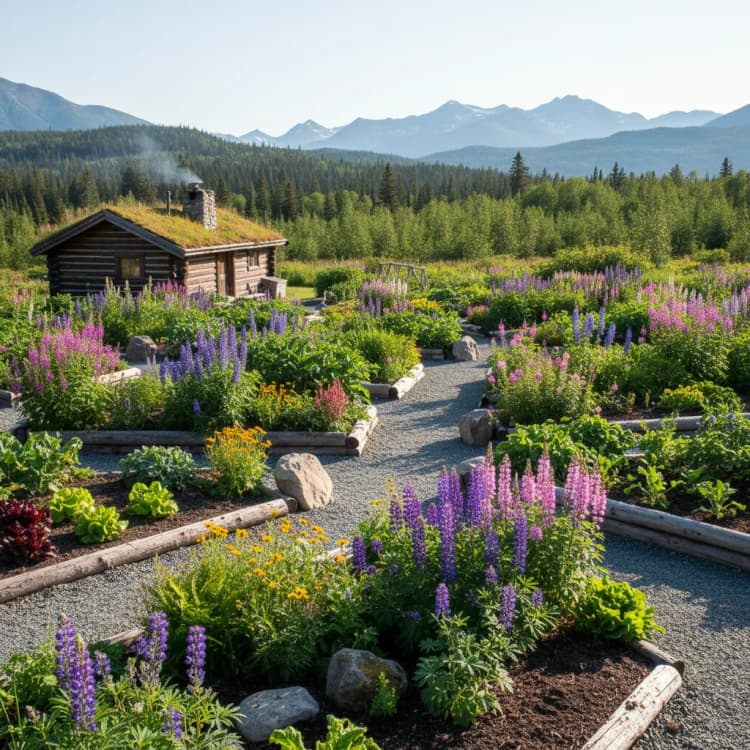
Alaska's vast wilderness and extreme climate create unique gardening challenges across diverse ecosystems. From arctic tundra to temperate rainforest, the cold climate with short summers demands hardy plants and specialized techniques.
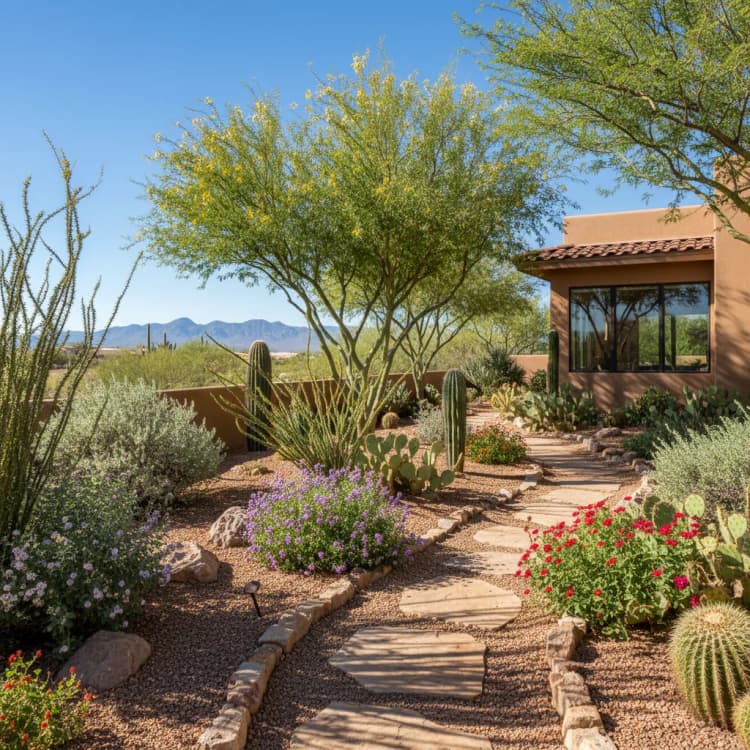
Arizona landscapes embrace desert beauty with drought-tolerant plants, strategic shade, and water-conserving design. Homeowners create stunning outdoor spaces using native Sonoran Desert plants, colorful desert wildflowers, and hardscaping that celebrates the region's unique climate and natural beauty.
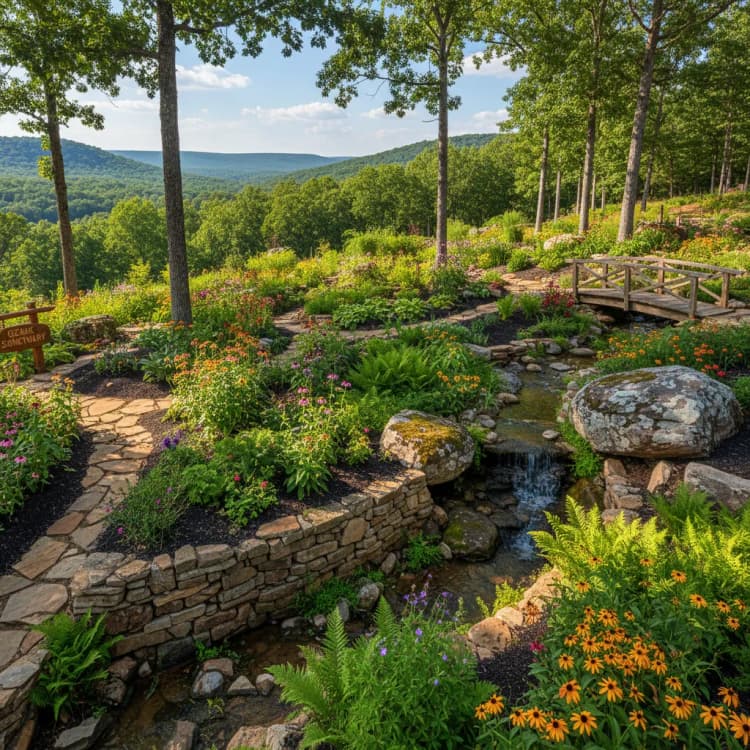
Arkansas transitions from Ozark Mountains in the north to Mississippi Delta lowlands in the south, creating diverse gardening conditions. The humid subtropical climate supports everything from woodland gardens to cotton-field landscapes.

California's diverse climate zones span from Mediterranean coastal regions to arid deserts and alpine mountains. Homeowners increasingly focus on drought-tolerant, fire-resistant landscaping that conserves water while creating beautiful outdoor spaces that thrive year-round.
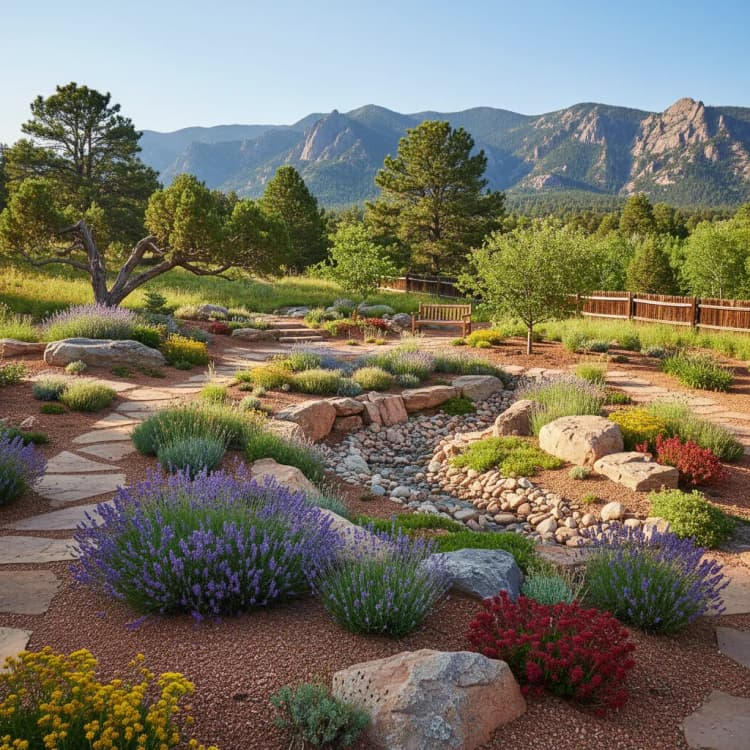
Colorado's high-altitude climate and dramatic elevation changes create unique landscaping challenges and opportunities. From alpine meadows to high desert, gardeners focus on drought-tolerant natives, xeriscaping, and plants adapted to intense sun, low humidity, and temperature swings.
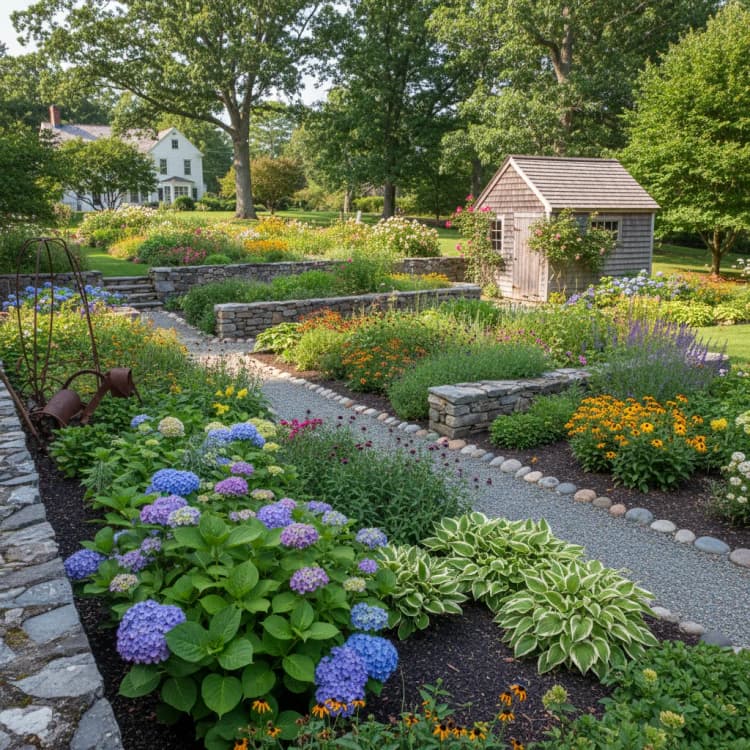
Connecticut's varied landscape includes coastal areas, river valleys, and rolling hills, creating diverse gardening opportunities. The humid continental climate features cold winters, warm summers, and moderate rainfall throughout the year.
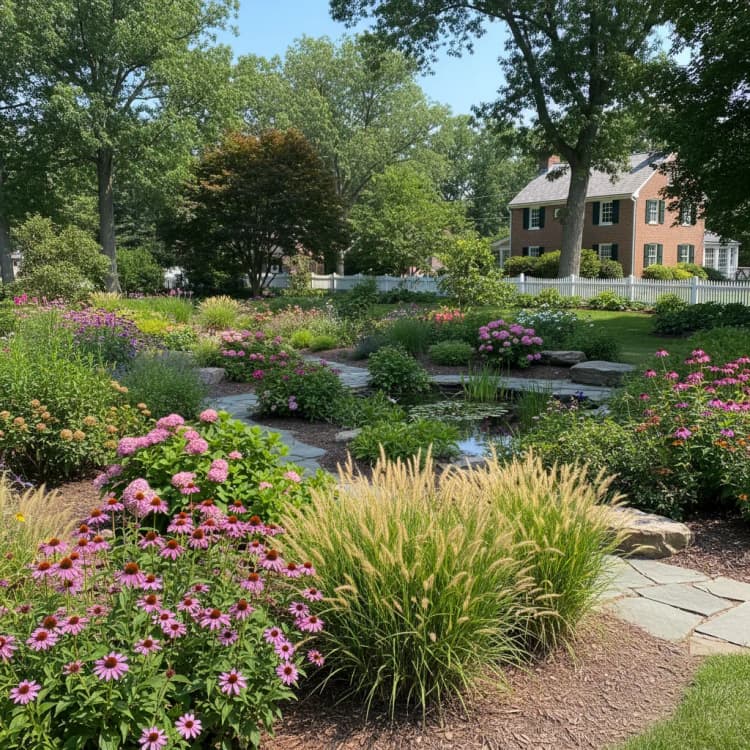
Delaware's small size includes coastal beaches, inland farms, and urban areas, creating diverse gardening opportunities. The humid subtropical climate features hot summers, mild winters, and moderate rainfall throughout the year.

Florida's subtropical to tropical climate brings year-round growing but also humidity, intense storms, and salt exposure in coastal areas. Homeowners prioritize hurricane-resistant plants, flood-tolerant species, and low-maintenance designs that thrive in sandy soil and high heat.

Georgia gardens thrive in humid subtropical heat with mild winters, abundant rainfall, and red clay soil. Homeowners create lush Southern landscapes with native azaleas, shade-loving plants under mature trees, and designs that handle summer heat and humidity while providing year-round beauty.
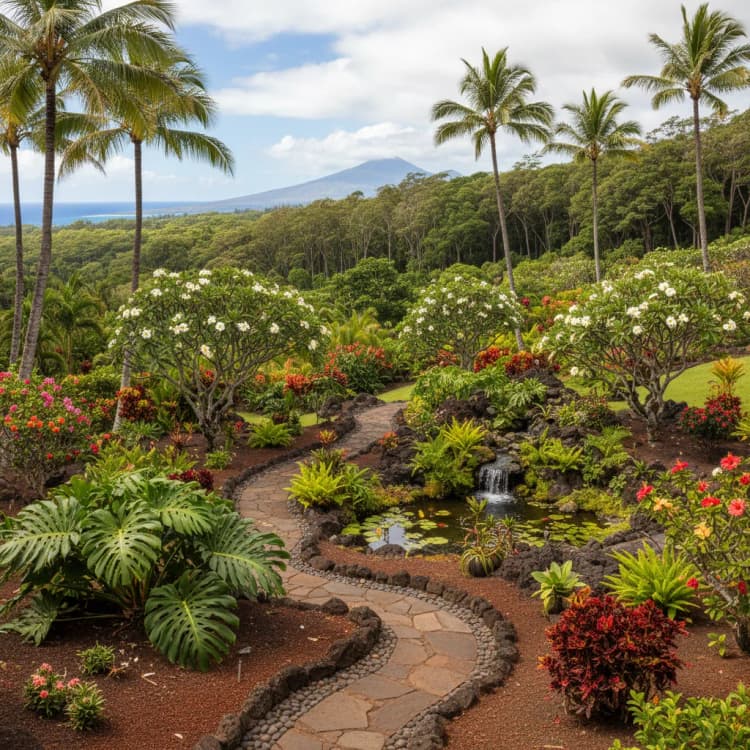
Hawaii's volcanic islands and tropical climate create unique gardening opportunities across diverse microclimates. From coastal beaches to mountain rainforests, the mild temperatures and varied rainfall support an incredible diversity of tropical plants.
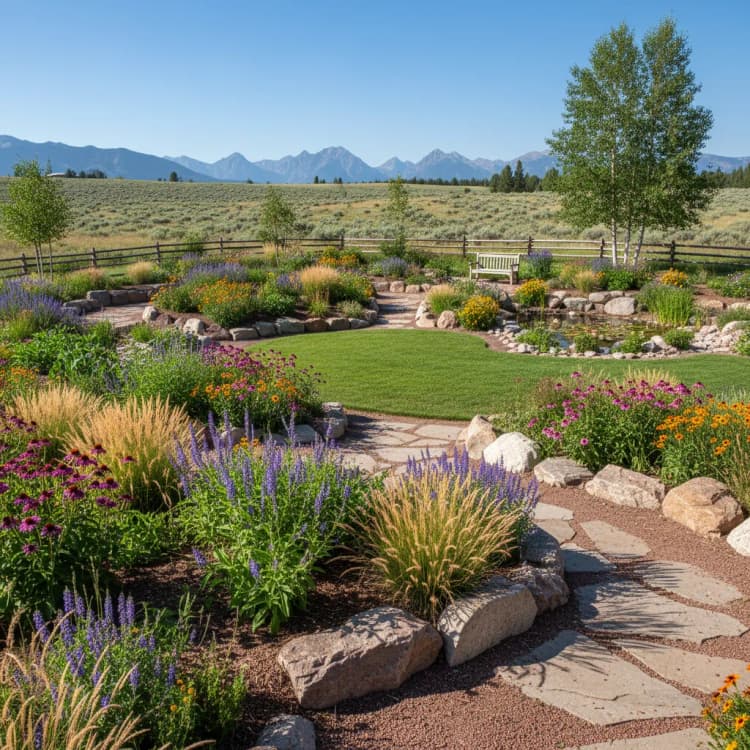
Idaho's diverse geography ranges from high mountain ranges to fertile valleys and arid plains. The varied climate zones support everything from alpine plants to desert species, with cold winters and hot, dry summers.
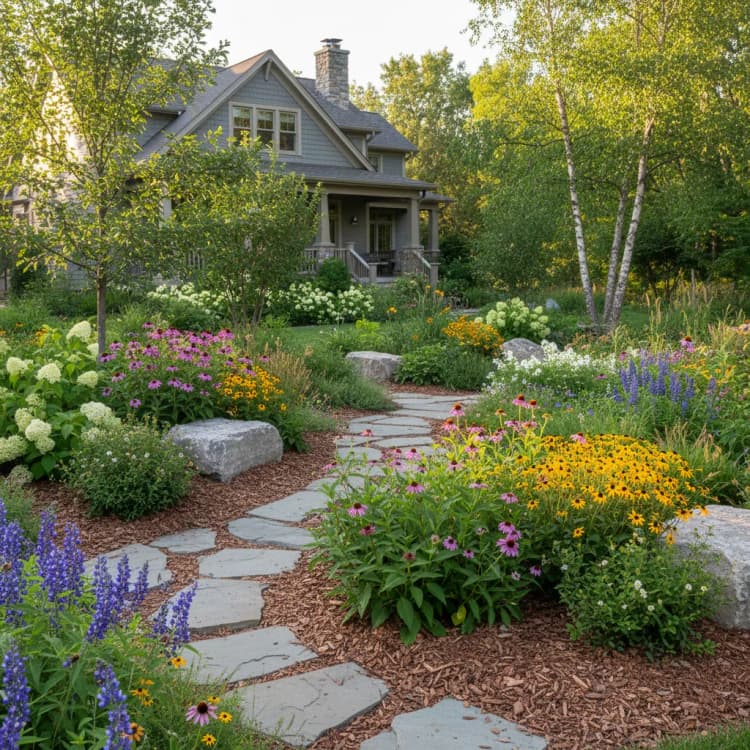
Illinois gardens thrive in prairie-influenced landscapes with humid summers, cold winters, and rich soil. Homeowners embrace native prairie plants, create pollinator habitat, and design gardens that withstand temperature extremes while celebrating the state's tallgrass prairie heritage.
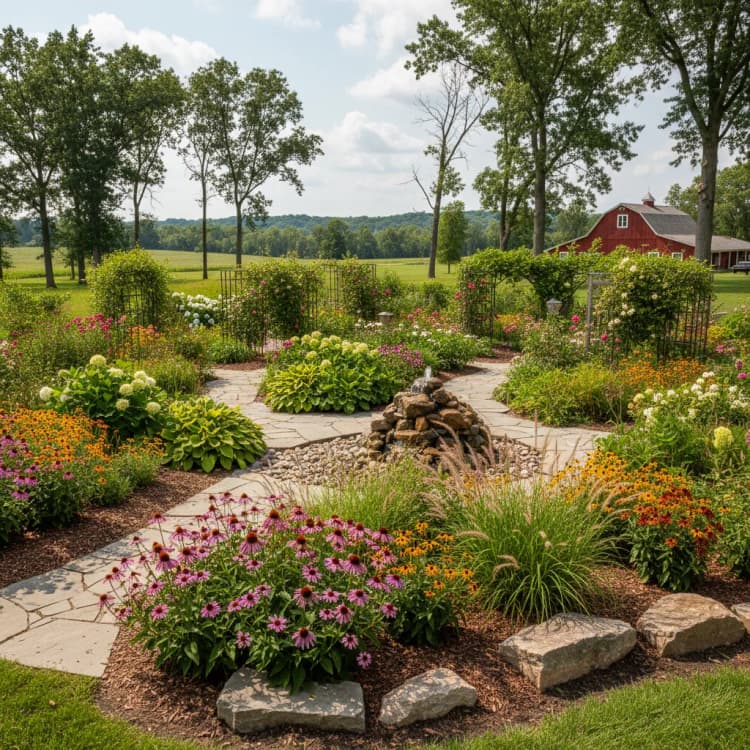
Indiana's Midwest climate offers four distinct seasons with cold winters and hot, humid summers. From prairie remnants to woodland gardens, the state supports traditional perennial borders, productive vegetable gardens, and native plant restorations.
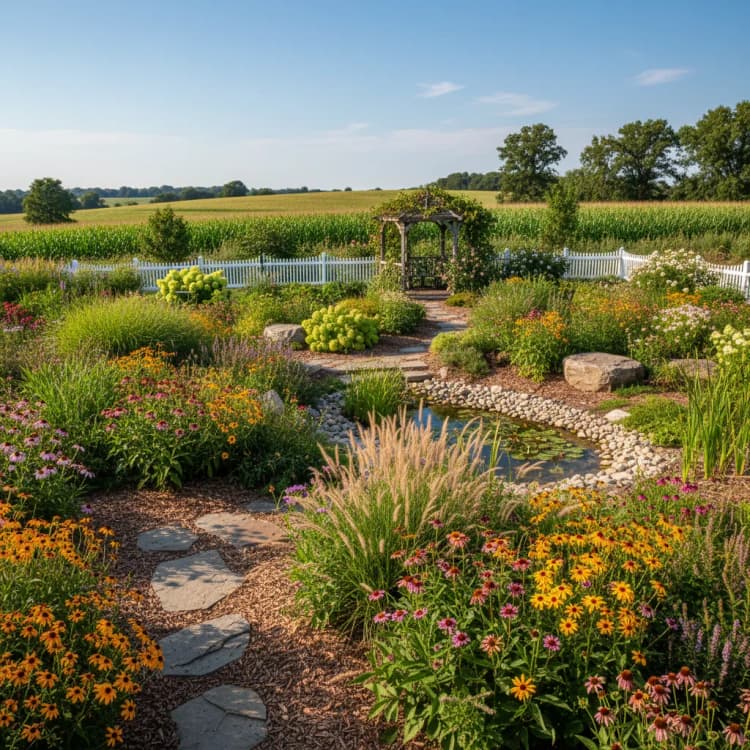
Iowa's prairie heritage and fertile soils make it ideal for productive gardens. Hot, humid summers and cold winters support traditional Midwest gardens, native prairie restorations, and abundant vegetable production.
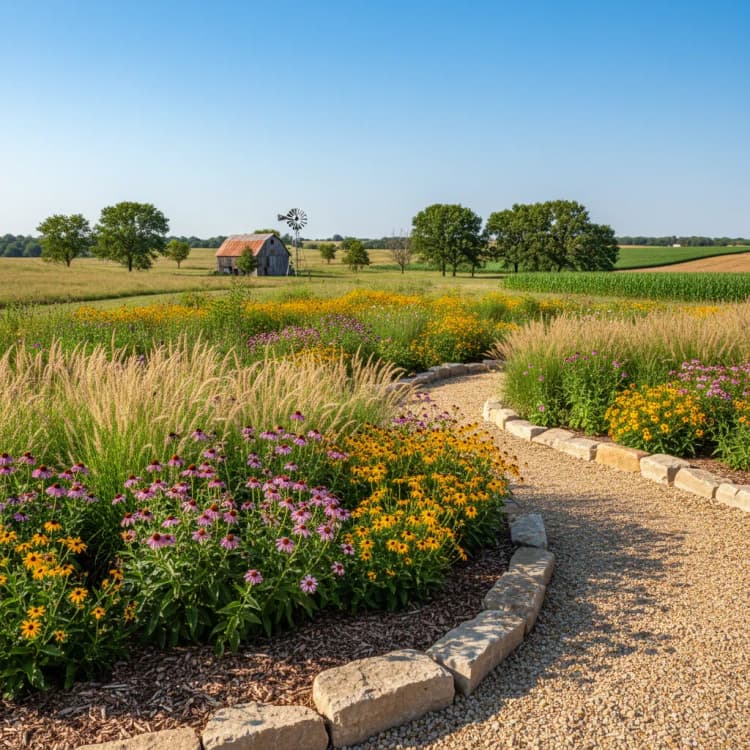
Kansas spans tallgrass prairie in the east to shortgrass steppe in the west, creating diverse gardening conditions. The continental climate features hot summers, cold winters, and strong winds, making windbreaks and drought-tolerant plants essential.
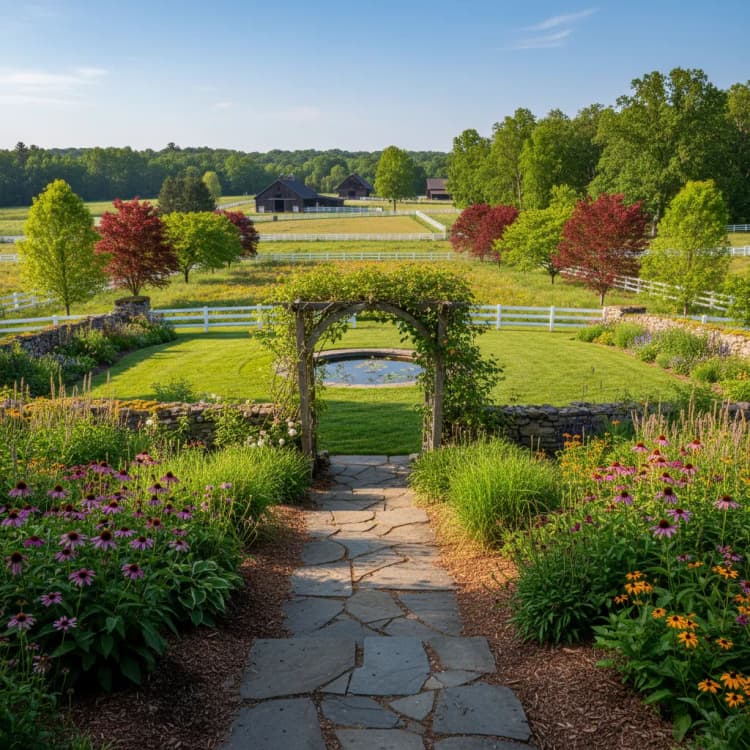
Kentucky's varied terrain from Appalachian mountains to western lowlands creates diverse gardening zones. Moderate climate with distinct seasons supports both southern and northern plants, with humid summers and occasional harsh winters.
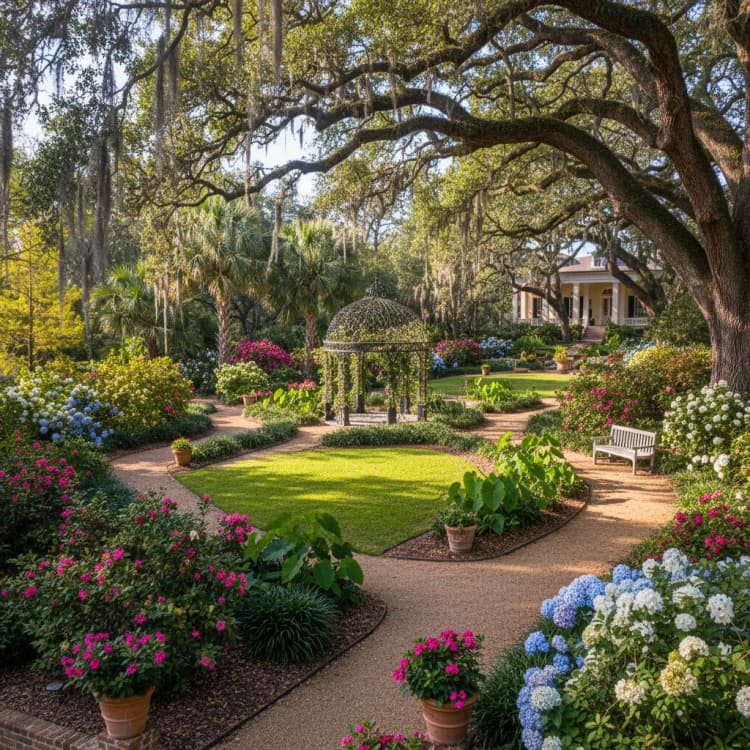
Louisiana's subtropical climate brings hot, humid summers and mild winters perfect for lush, tropical-style gardens. From New Orleans courtyards to bayou landscapes, gardeners focus on heat-tolerant natives, adapted exotics, and year-round color.
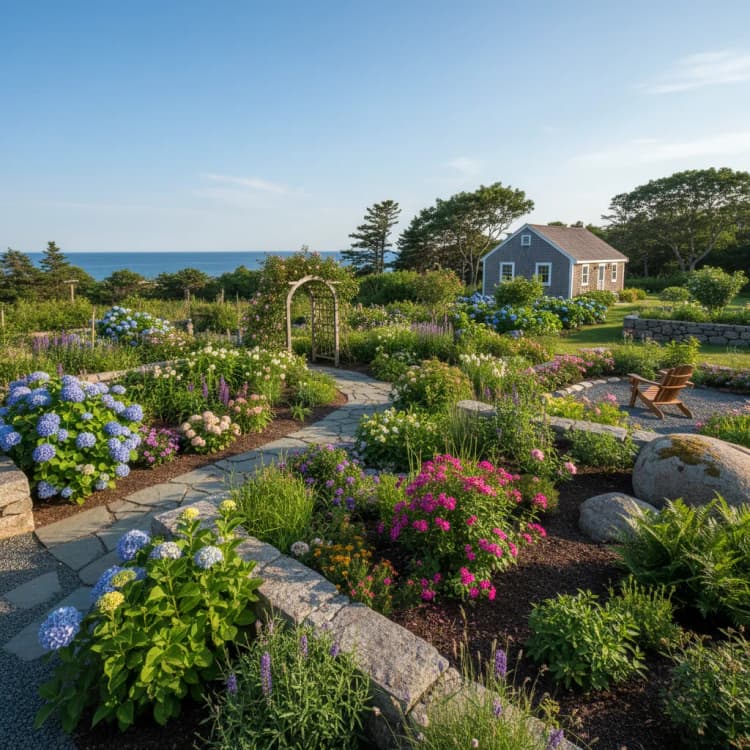
Maine's rugged coastline, vast forests, and inland lakes create diverse gardening opportunities. The humid continental climate features cold winters, cool summers, and moderate rainfall, supporting northern forest and coastal plant communities.
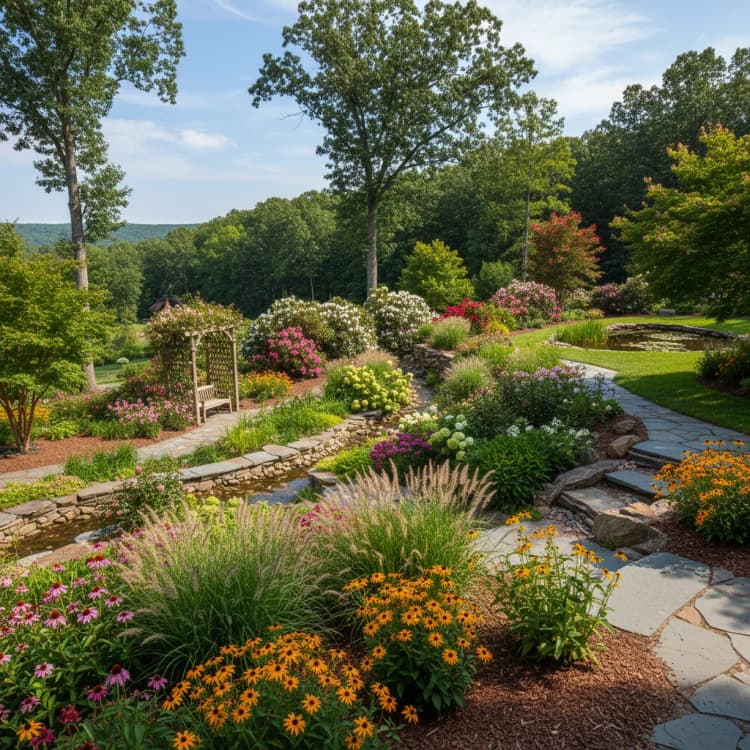
Maryland's diverse geography spans from the Chesapeake Bay to the Appalachian Mountains, creating varied gardening conditions. The humid subtropical climate features hot summers, mild winters, and moderate rainfall throughout the year.
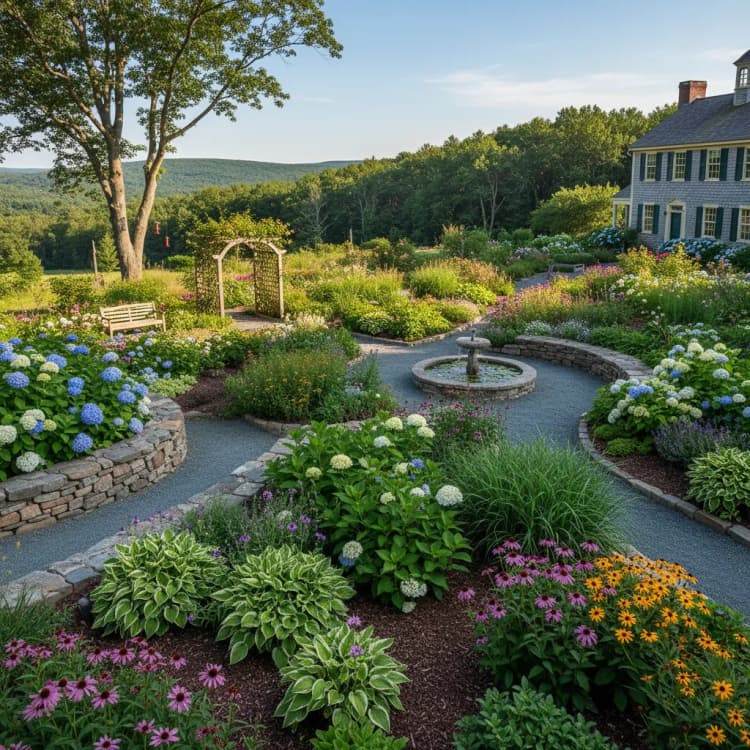
Massachusetts gardeners navigate coastal influences, historic New England charm, and cold winters. From Cape Cod salt gardens to Berkshire mountain plantings, the state offers short but intense growing seasons perfect for cool-season crops, native woodland plants, and classic perennial borders.
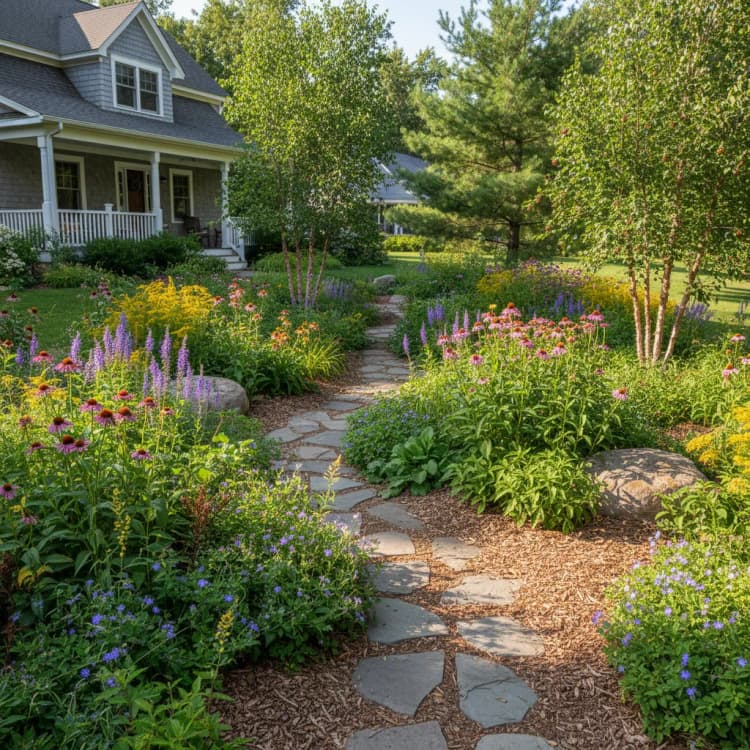
Michigan gardens navigate cold winters, humid summers, and sandy or clay soils shaped by glacial history. Homeowners create landscapes celebrating Great Lakes proximity, utilizing native prairie and woodland plants, and designing for harsh winters while maximizing the short but productive growing season.
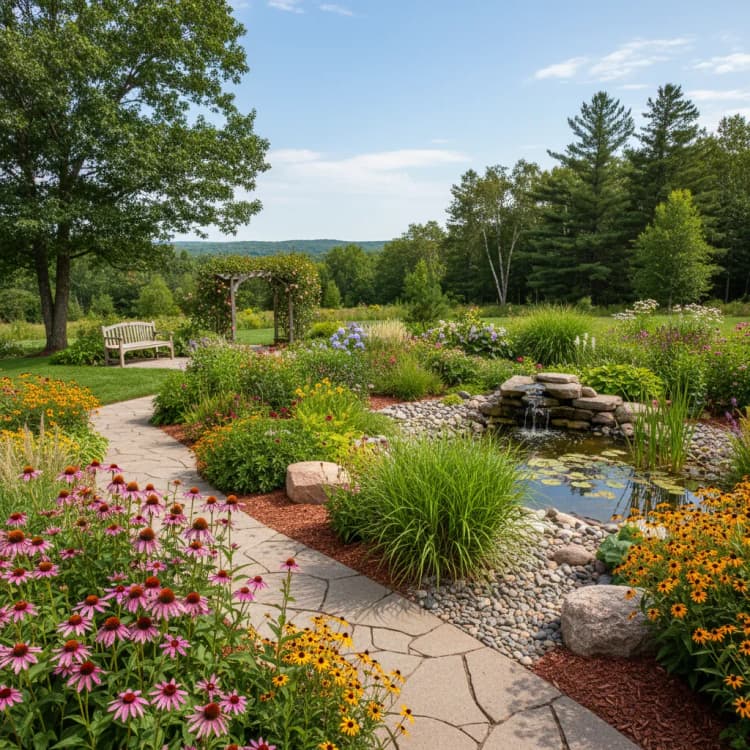
Minnesota's northern climate challenges gardeners with cold winters and short growing seasons, but rewards with vibrant summer displays. Focus on hardy natives, cold-tolerant perennials, and season-extending techniques.

Mississippi's humid subtropical climate features hot, humid summers and mild winters, creating ideal conditions for lush Southern gardens. From Gulf Coast landscapes to Delta farmlands, gardeners embrace heat-tolerant plants and traditional Southern design elements.
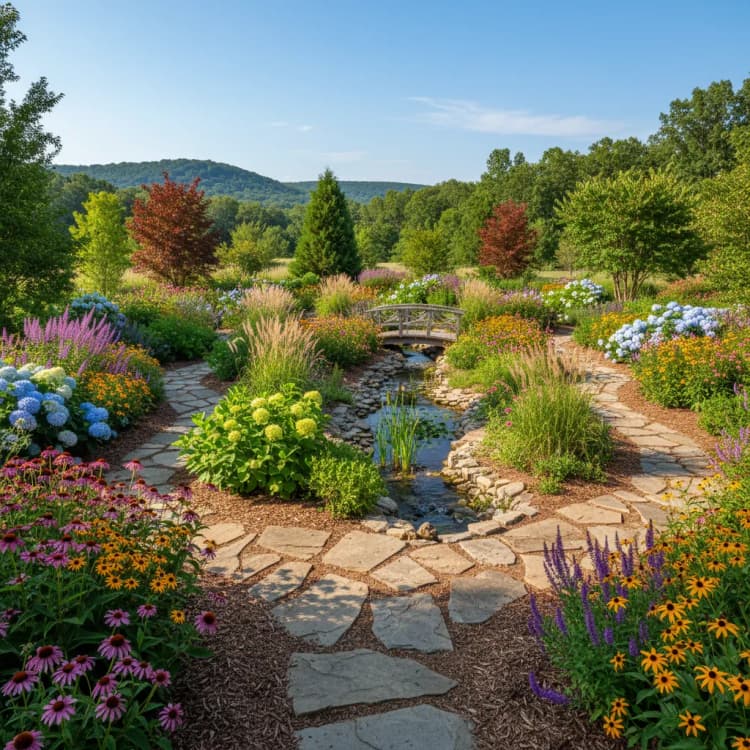
Missouri's transitional climate bridges north and south, supporting diverse gardens from Ozark woodland wildflowers to prairie restorations. Hot, humid summers and variable winters offer long growing seasons with occasional extremes.
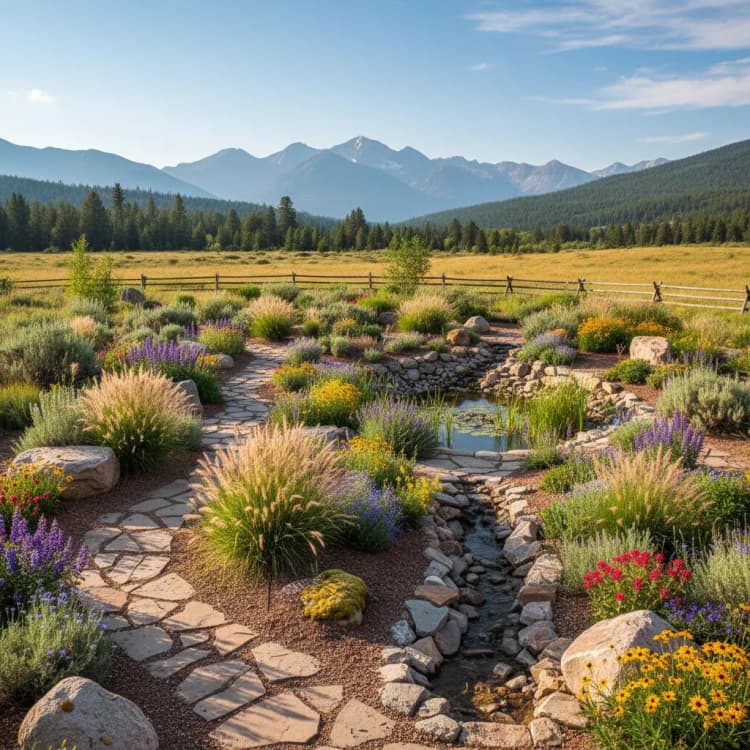
Montana's diverse landscape spans from the Rocky Mountains to the Great Plains, creating varied gardening conditions. The cold continental climate features short summers, long winters, and low humidity, requiring hardy plants and wind protection.
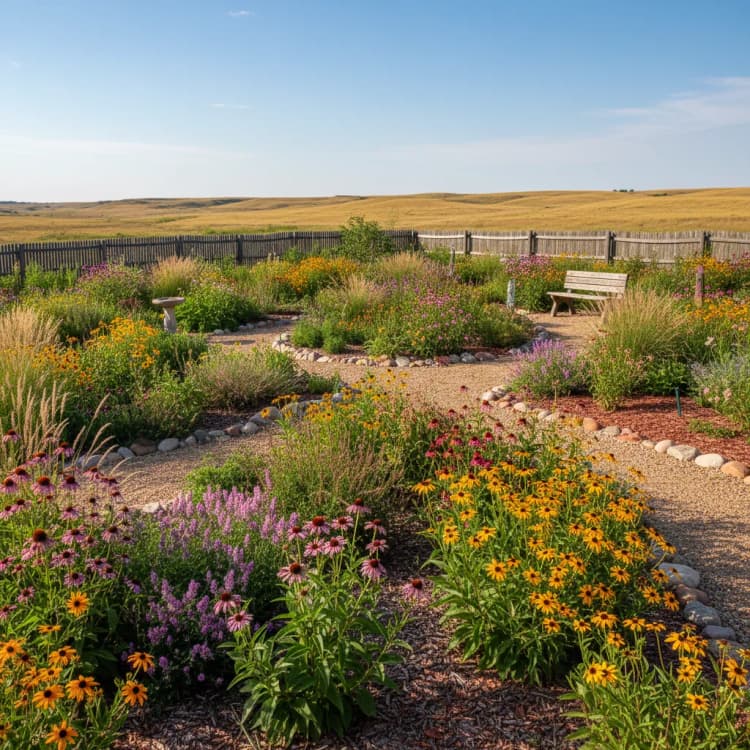
Nebraska transitions from eastern deciduous forests to western high plains, creating varied gardening opportunities. The continental climate brings hot summers, cold winters, and variable rainfall, requiring adaptable plants and soil management.
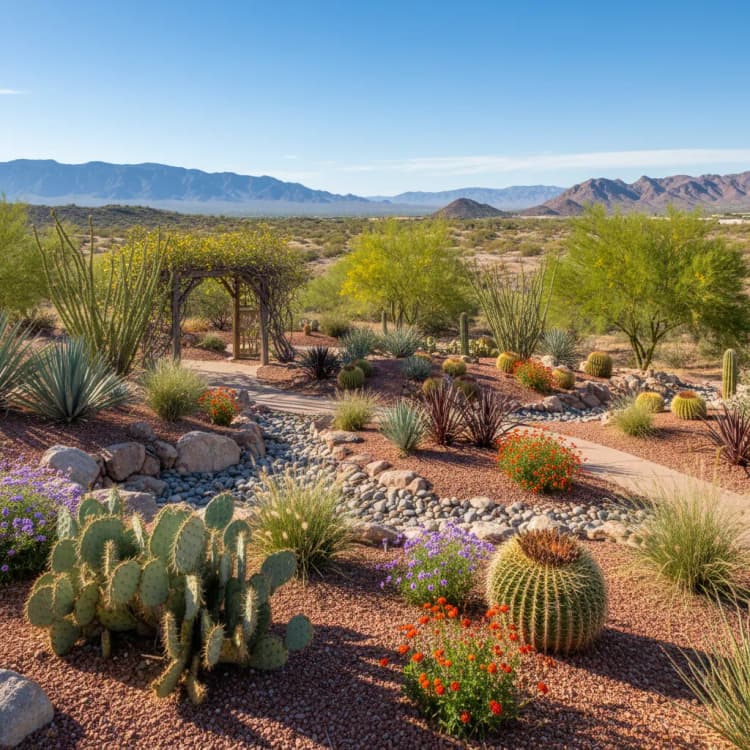
Nevada's vast desert landscapes and mountain ranges create extreme gardening conditions. The arid climate with hot summers, cold winters, and very low rainfall demands desert-adapted plants and water conservation strategies.
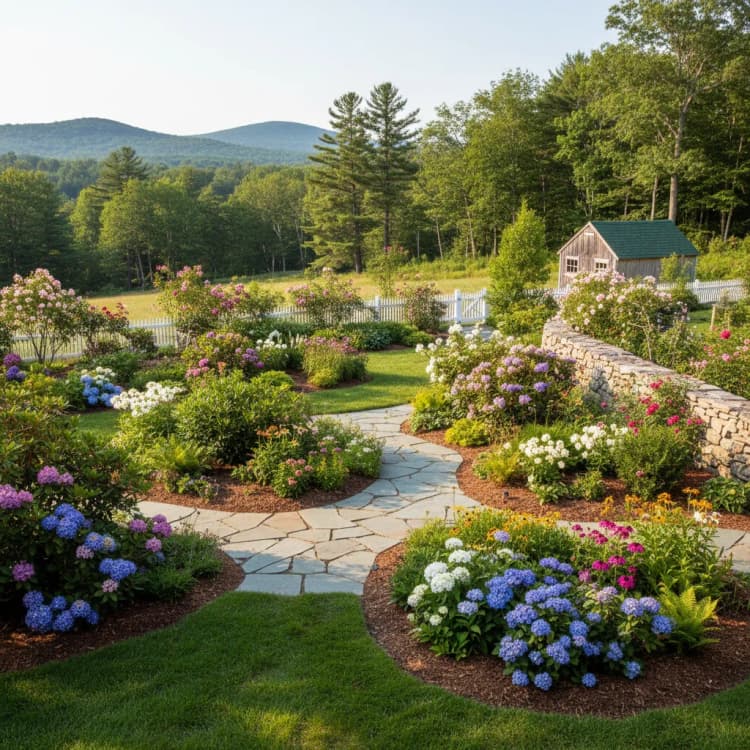
New Hampshire's landscape features the White Mountains, lakes region, and seacoast, creating diverse gardening conditions. The humid continental climate brings cold winters, warm summers, and varied precipitation across different elevations.
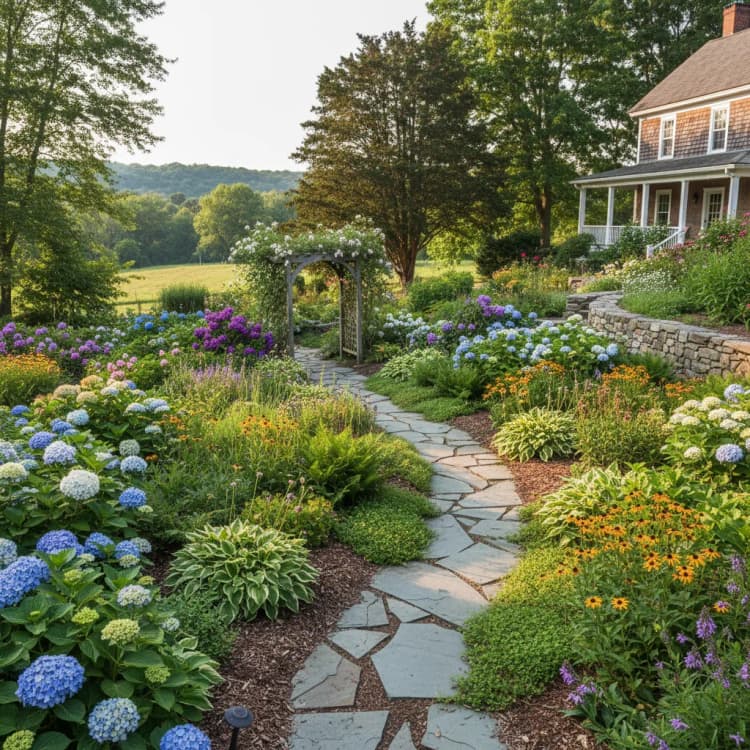
New Jersey's varied landscape includes coastal beaches, pine barrens, and urban areas, creating diverse gardening conditions. The humid subtropical climate features hot summers, cold winters, and moderate rainfall throughout the year.

New Mexico's high desert landscape features dramatic elevation changes from river valleys to mountain peaks. The arid climate with intense sun, cold winters, and low rainfall demands drought-tolerant plants and careful water management.
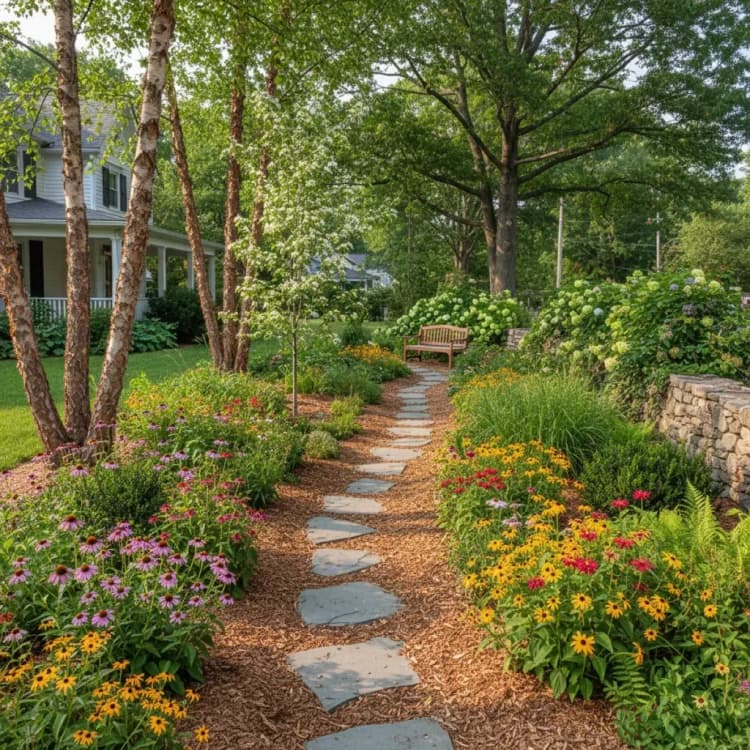
New York gardens experience four distinct seasons with cold winters, warm summers, and variable rainfall. Homeowners seek designs that offer year-round interest, handle snow and ice, and maximize the short growing season with strategic plant selection and hardscape features.
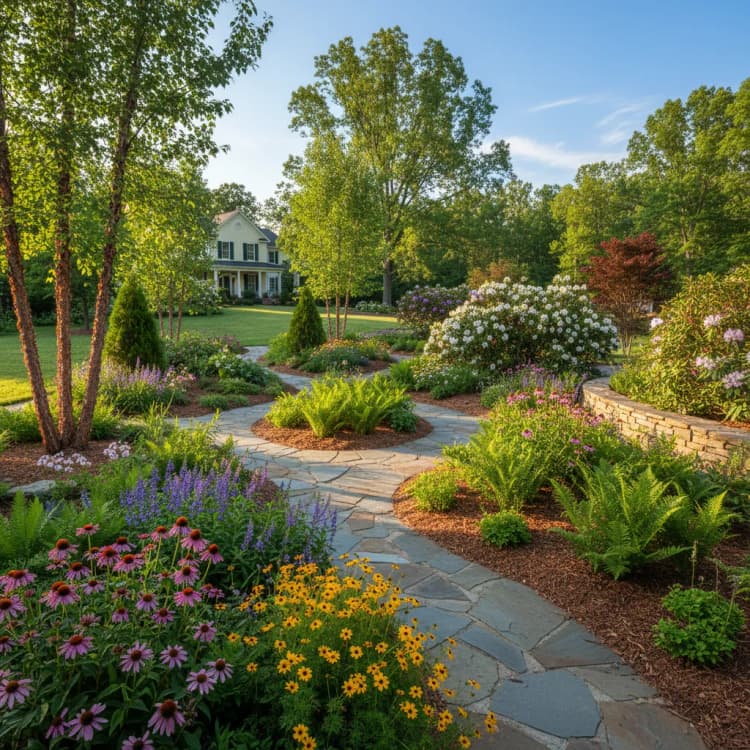
North Carolina gardens span mountain, piedmont, and coastal regions with diverse microclimates. Homeowners create landscapes celebrating native plants, handling humidity and heat, and providing habitat for migratory birds while showcasing the state's rich biodiversity from mountains to sea.
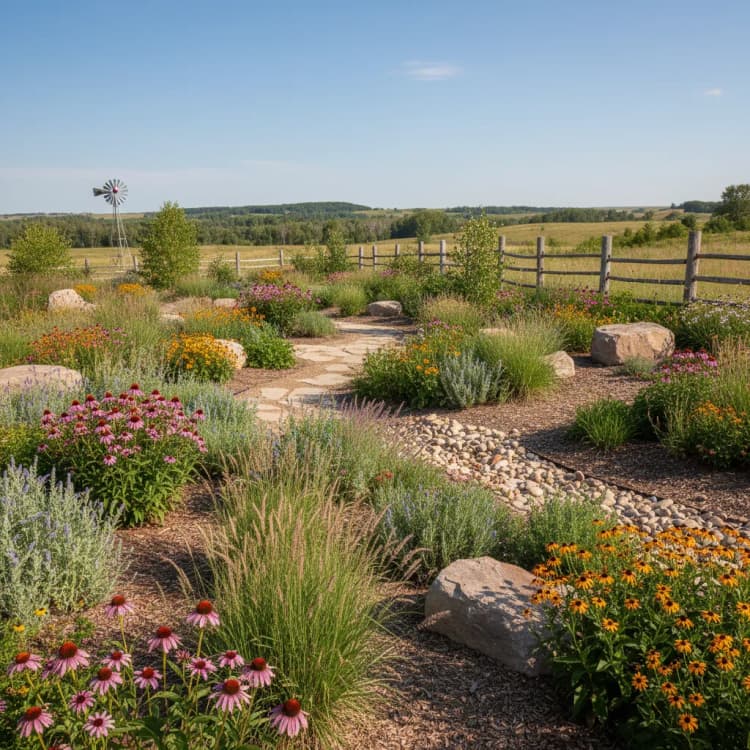
North Dakota's vast prairies and badlands create challenging gardening conditions with extreme weather. The cold continental climate features short summers, long winters, and low rainfall, requiring hardy plants and protective measures.
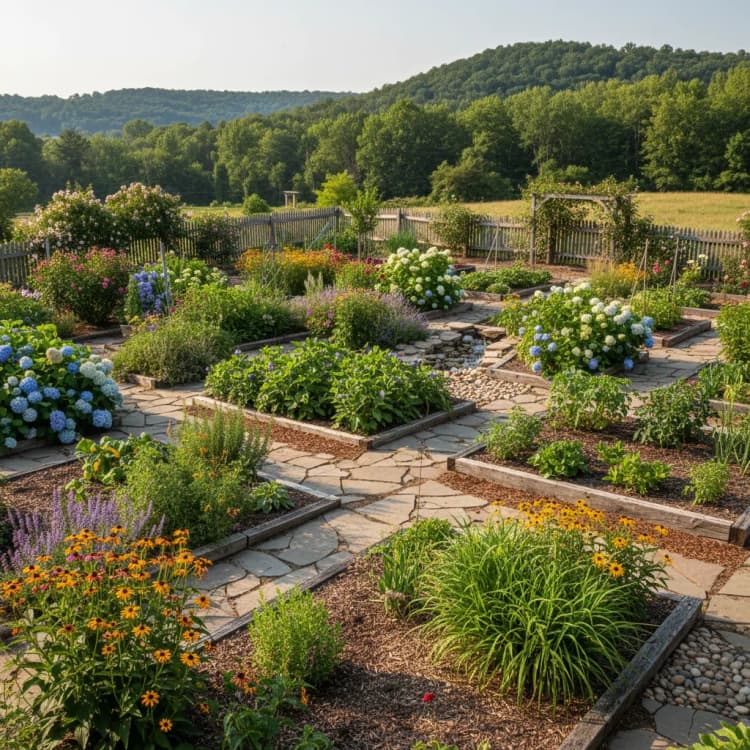
Ohio's continental climate offers four distinct seasons with cold winters and warm, humid summers. The state's diverse terrain supports traditional Midwest gardens featuring perennials, native prairies, and productive vegetable gardens with a growing season ideal for a wide variety of crops.
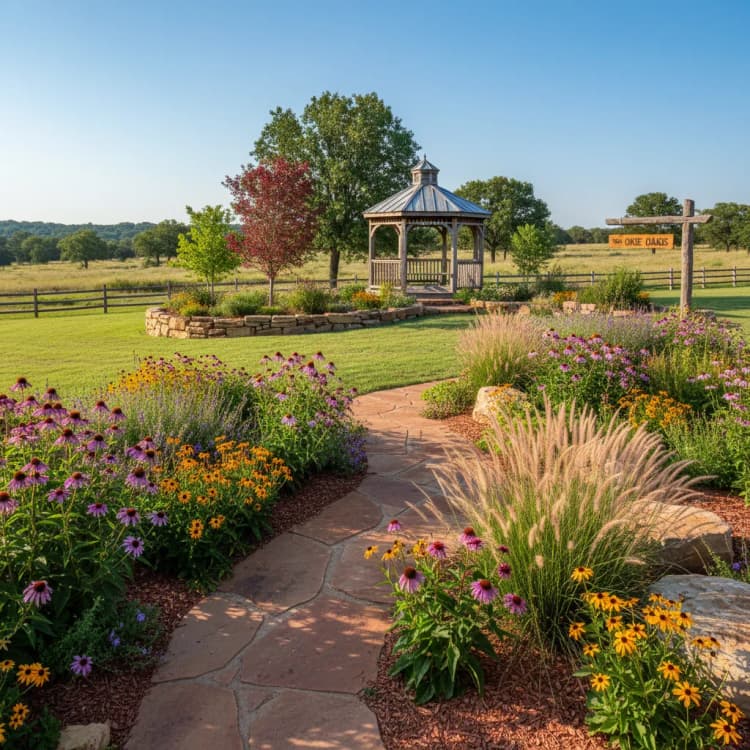
Oklahoma transitions from eastern forests to western plains, creating diverse gardening conditions. The continental climate features hot summers, cold winters, and variable rainfall, requiring adaptable plants and wind protection.
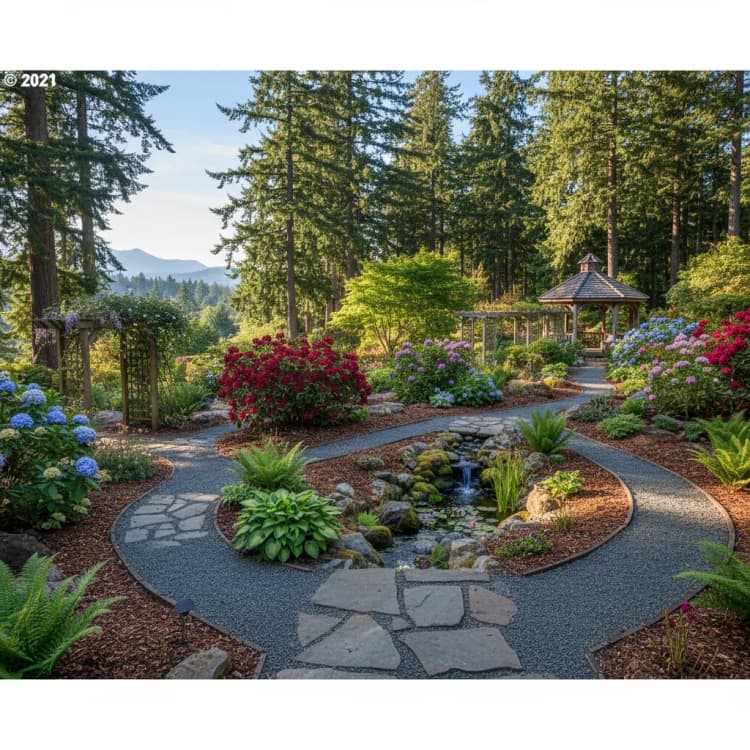
Oregon's diverse climate zones—from lush Willamette Valley to high desert east of the Cascades—offer varied gardening opportunities. Western Oregon's mild, wet winters support rhododendrons and evergreens, while eastern Oregon requires drought-adapted plants and xeriscaping.
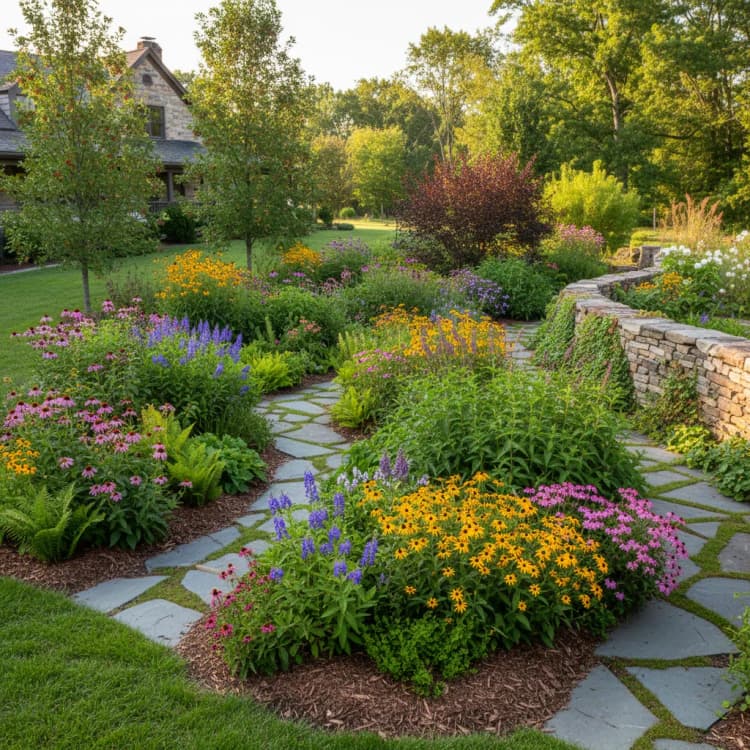
Pennsylvania landscapes navigate humid summers, cold winters, and rich clay soils. Homeowners create gardens that celebrate Appalachian native plants, provide habitat for local wildlife, and offer seasonal beauty from spring wildflowers through vibrant fall foliage.
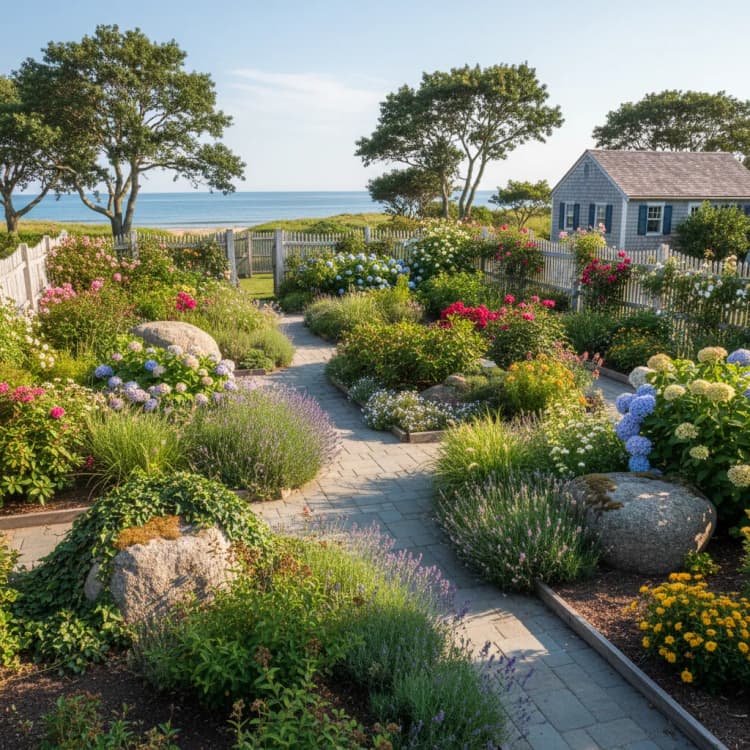
Rhode Island's small size belies its diverse landscapes, from coastal areas to inland forests. The humid continental climate features cold winters, warm summers, and moderate rainfall, supporting both maritime and woodland plant communities.

South Carolina's coastal plains, piedmont, and mountain regions create diverse gardening opportunities. The humid subtropical climate supports lush vegetation, from palmetto-lined beaches to upcountry gardens with four-season interest.
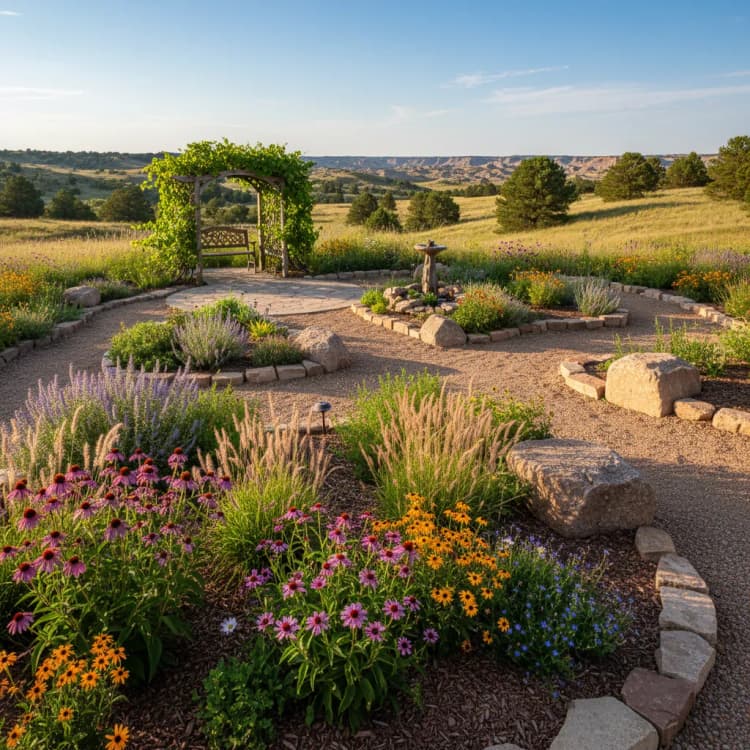
South Dakota encompasses the Great Plains in the east and Black Hills in the west, offering diverse landscapes from prairie grasslands to ponderosa pine forests. The semi-arid continental climate demands hardy, drought-tolerant plants.
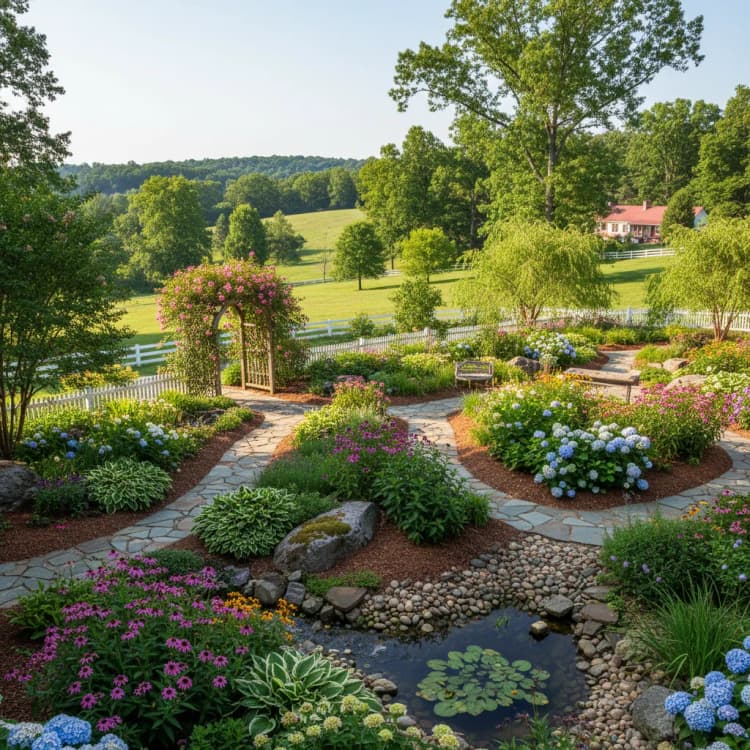
Tennessee's varied climate from mountain highlands to Mississippi lowlands creates diverse gardening opportunities. Warm summers and mild winters support southern gardens with extended growing seasons, while mountain areas offer cooler conditions perfect for spring wildflowers and fall color.
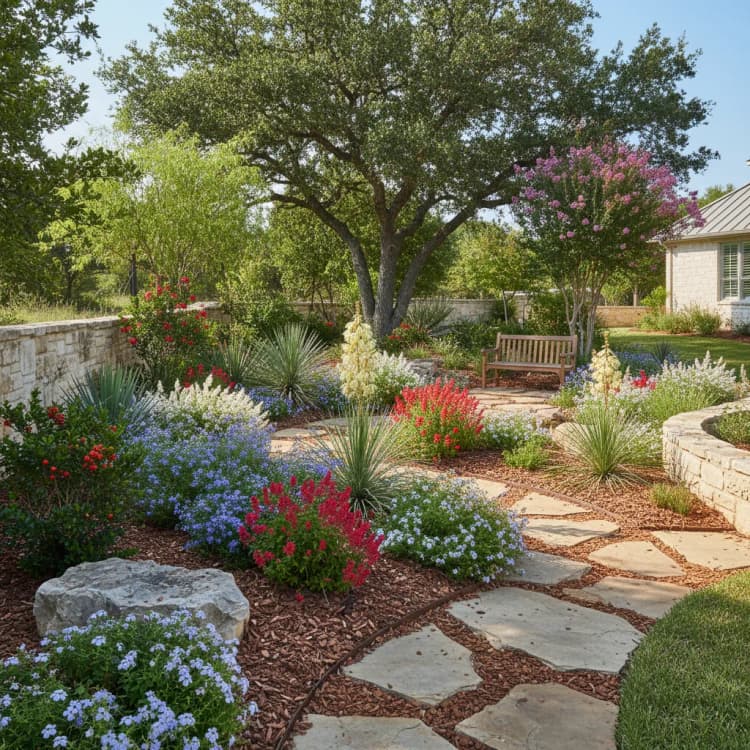
Texas landscapes must withstand extreme heat, periodic drought, and diverse soil conditions from clay to sand. Homeowners seek low-maintenance, heat-tolerant designs that handle intense sun while providing shade and reducing cooling costs through strategic plant placement.
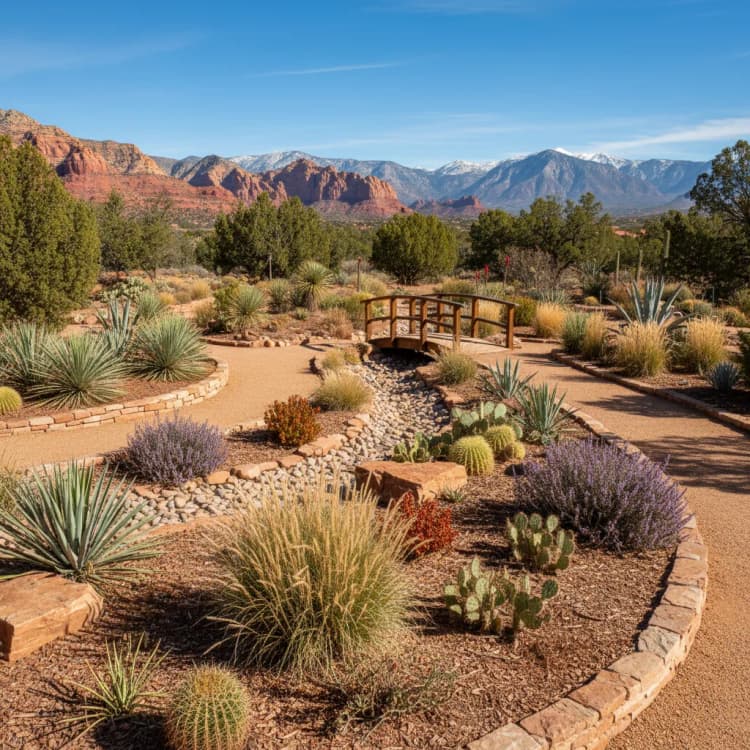
Utah's dramatic landscape features deserts, mountains, and plateaus, creating extreme gardening challenges. The arid climate with cold winters and hot summers demands drought-tolerant plants and careful water management.
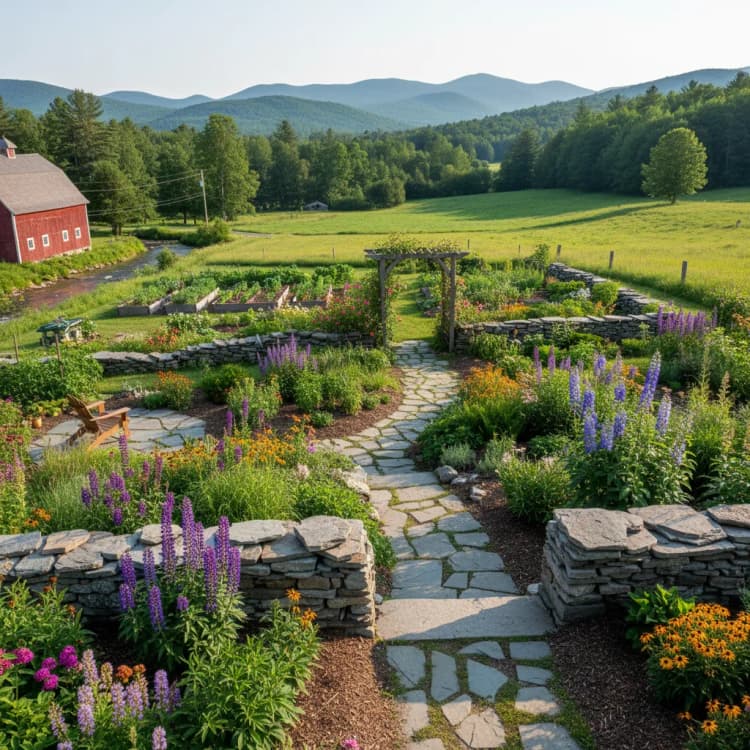
Vermont's Green Mountains and Lake Champlain valley create diverse gardening conditions across the state. The humid continental climate features cold winters, warm summers, and moderate rainfall, supporting both mountain and valley ecosystems.
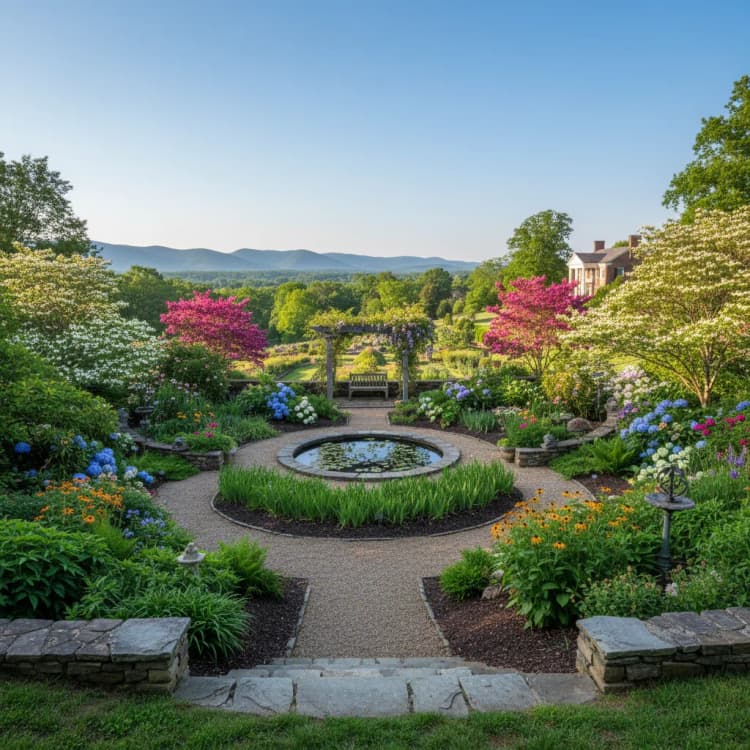
Virginia's varied terrain from Tidewater to mountains offers diverse gardening zones. The mid-Atlantic climate supports traditional southern gardens with boxwood and magnolias, coastal salt-tolerant plants, and mountain wildflowers, with a long growing season and ample rainfall.
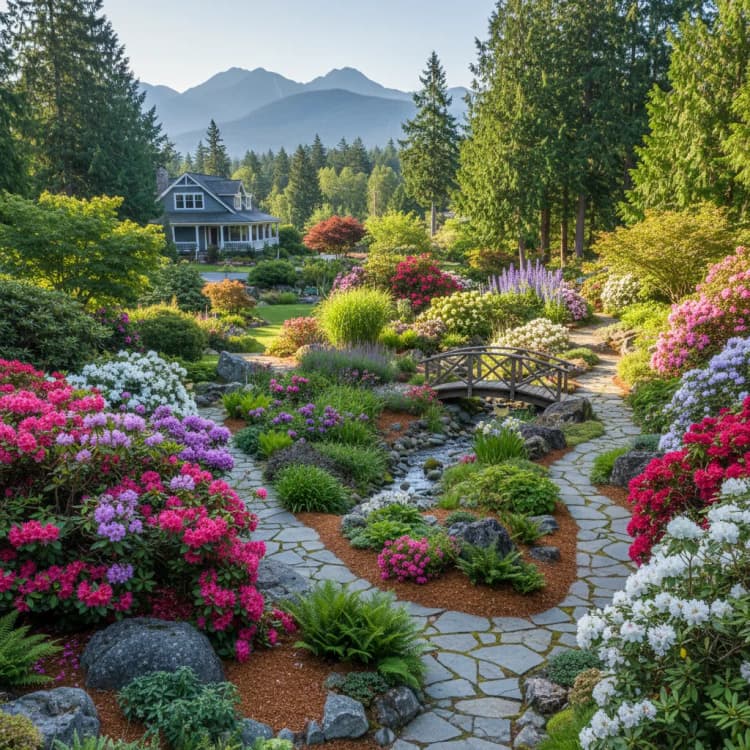
Washington's maritime climate west of the Cascades brings mild, wet winters and dry summers—perfect for rhododendrons, Japanese maples, and lush woodland gardens. East of the mountains, gardeners adapt to arid conditions with drought-tolerant natives and xeriscaping.
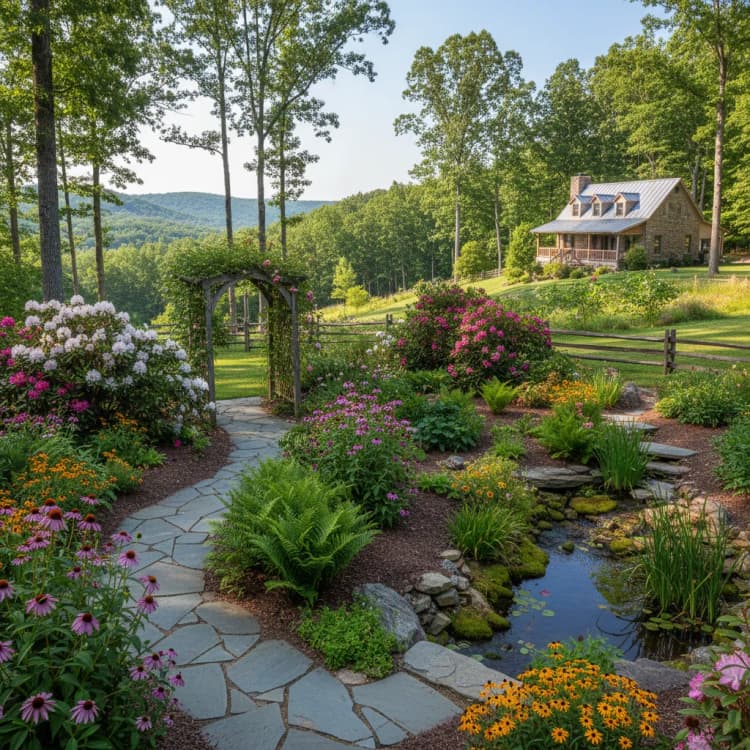
West Virginia's mountainous terrain and river valleys create diverse gardening conditions across the state. The humid continental climate features cold winters, warm summers, and moderate rainfall, supporting both mountain and valley ecosystems.
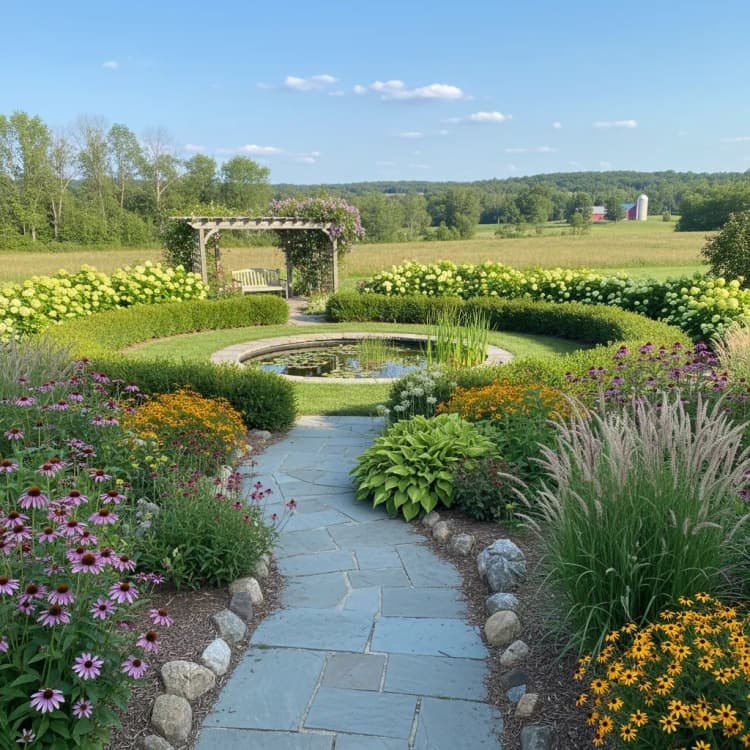
Wisconsin's continental climate brings cold, snowy winters and warm summers perfect for four-season gardens. From Lake Superior's rocky shores to rolling farmland, gardeners focus on hardy perennials, native prairies, and cold-tolerant vegetables.
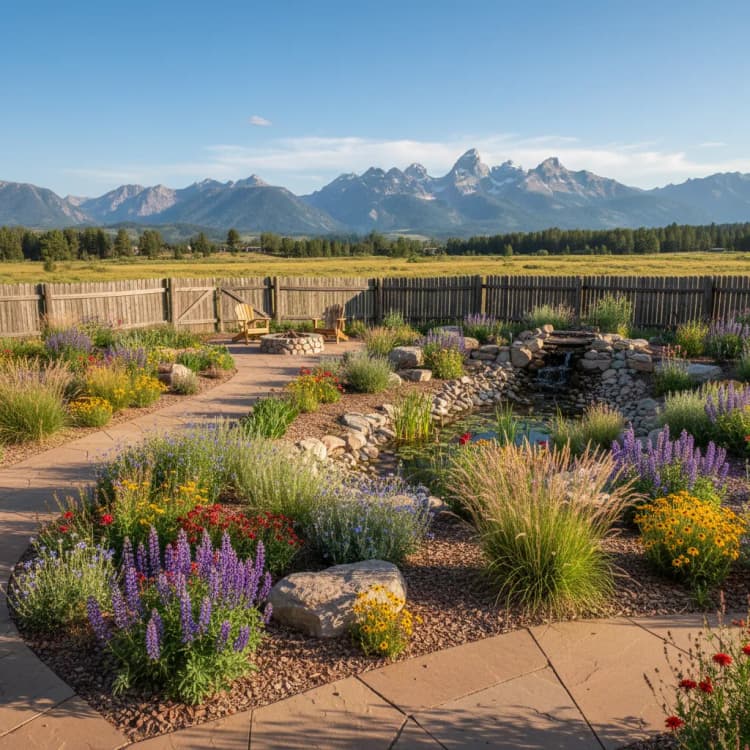
Wyoming's high elevation and semi-arid climate create challenging gardening conditions across diverse landscapes. From alpine tundra to sagebrush steppe, the cold winters and short summers demand hardy, drought-tolerant plants.
Ready to Design Your Perfect Garden?
Upload a photo of your yard and get AI-powered garden designs with plants perfectly suited to your region's climate and soil conditions.